What Muscles Does The Elliptical Work?
Author:
Unlock your full potential by engaging with our experts and community! Have questions about your fitness journey or looking for expert advice on weightlifting techniques? Don’t hesitate — leave a comment below and Ihor Shymechko will provide a personalized answer and insights to help you reach your goals.
Torokhtiy is reader-supported. Some links are affiliate links, and we may earn a commission at no extra cost to you. See our disclosure page for details.
Elliptical trainers are as popular as misunderstood. People think they are reserved for cardio bunnies or injured athletes. Give them a fair chance; within minutes, you’ll be left huffing and puffing.
Most cardio machines either provide a low-impact or full-body workout. Ellipticals fuse the best of both worlds. They burn calories, boost stamina, and give you maximum control. One study has recorded greater muscle activation than running or cycling. So you might wonder, what muscles does the elliptical work? Let’s find out.
What part of the body does the elliptical work? The zero-impact, total-body fitness tool works up your entire posterior chain with major elliptical target areas encompassing your legs, core, abs, back, chest, shoulders, and arms.

What Is An Elliptical?
Ellipticals let you walk, run, and stair climb without putting excessive stress on the joints. It has a pair of stationary handles, swinging dual-action handlebars, adjustable multi-incline pedals, and a weighted flywheel.
Since your feet never leave the platform as on a treadmill, it’s a low-impact yet weight-bearing aerobic activity. The good thing is that you can dictate difficulty by cranking up speed or resistance, whether you’re looking for steady-state or high-intensity bouts. In about half an hour, you can get rid of 270-378 calories on an elliptical, depending on your body weight and workout intensity.
Muscles Worked While The Elliptical Workout
The oviform straddle and pull-push mechanism recruits a large part of musculature. The entire posterior chain can be activated, which stretches from the spine to the ankles. Muscles used on ellipticals surpass those with treadmills, whilst the effort is reduced by 60% in comparison. Assuming you sustain a proper form, you’ll hit the following body parts.
1. Lower Body
The pedaling motion primarily uses the legs. It includes glutes, quads, hamstrings, and calves. Strengthening these muscles helps you create a stable foundation for athletic as well as daily activities.
- Quads and hamstrings are large groups of antagonist muscles located on the front and back of the thigh, respectively. It’s quite difficult to hammer both with a single movement. Knee flexion is impossible without their assistance. Strong quads and hams transfer into explosive squats, lunges, and deadlifts.
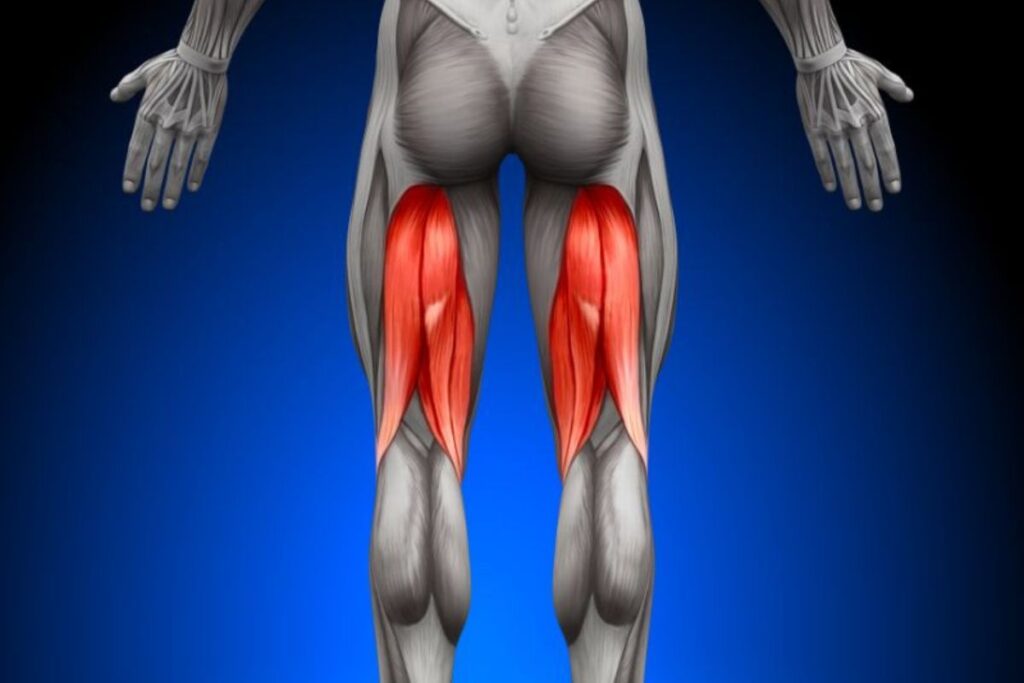
- Glutes are made of three muscles: maximus, medius, and minimus. They form your pelvis or butt region. Elliptical target areas are mostly quad-focused at standard settings, meaning no incline and forward motion. Switching to an uphill and reverse trek activates hams and glutes. Doctors also recommend backward pedaling to individuals with knee conditions, as it contracts quad muscles and avoids load on the tibiofemoral joint.
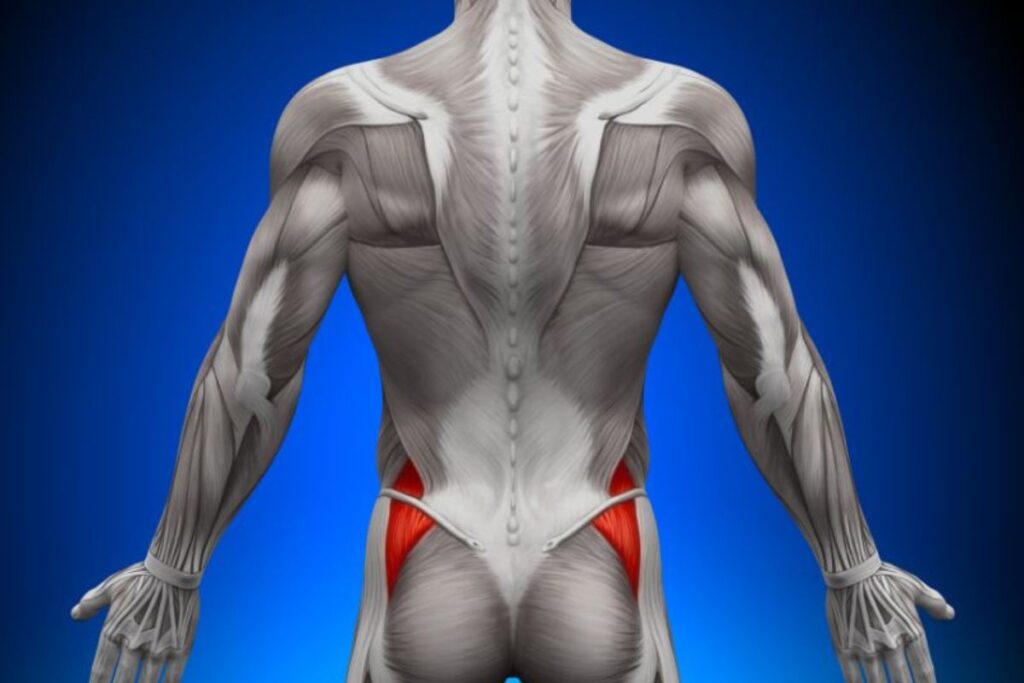
- Lastly, we have a couple of calf muscles enveloping shin bones while adjoining knees and ankles. In a way, these exist at the vanguard of impact movements, such as running and jumping. As you press your ball of the feet for downward strokes, calf muscles instantly get into action for plantar flexion and pass over the movement to quads midway.
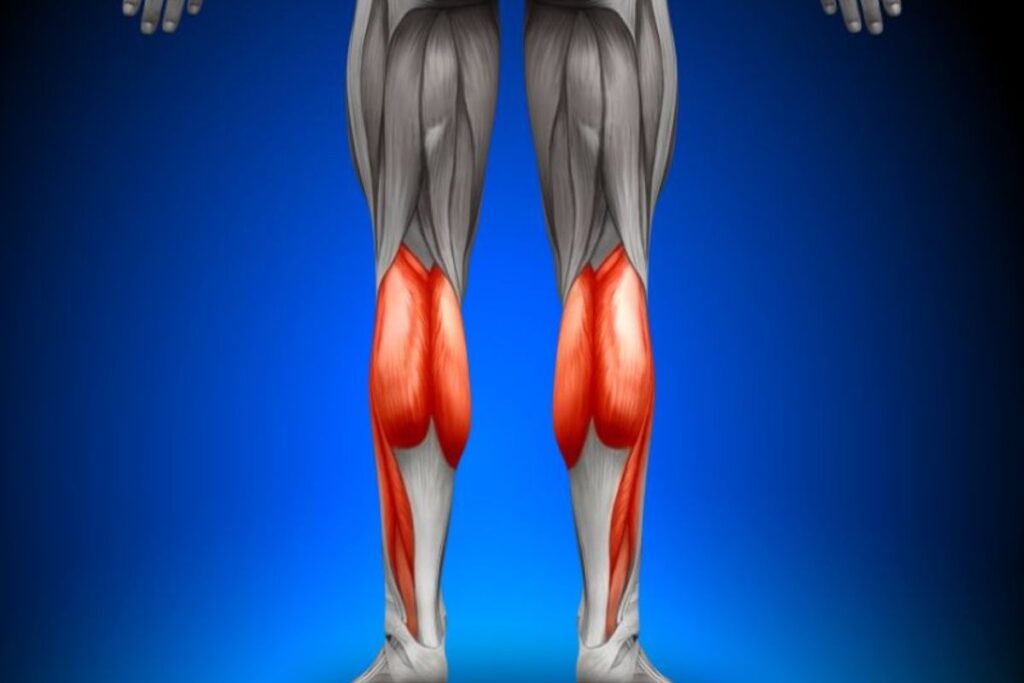
2. Core Muscles
No matter if you train the lower or upper portion of the body, the core and lower back power up all activities. Think of it as a column that keeps you upright. It’s more involved when you’re standing up as opposed to biking.
- Hip Flexors consist of five important muscles. They acquire the activity from extensors like quads to complete the swing. As you stretch your legs down and back up again, it splits eccentric and concentric phases. Hip flexors appear in the latter phase.
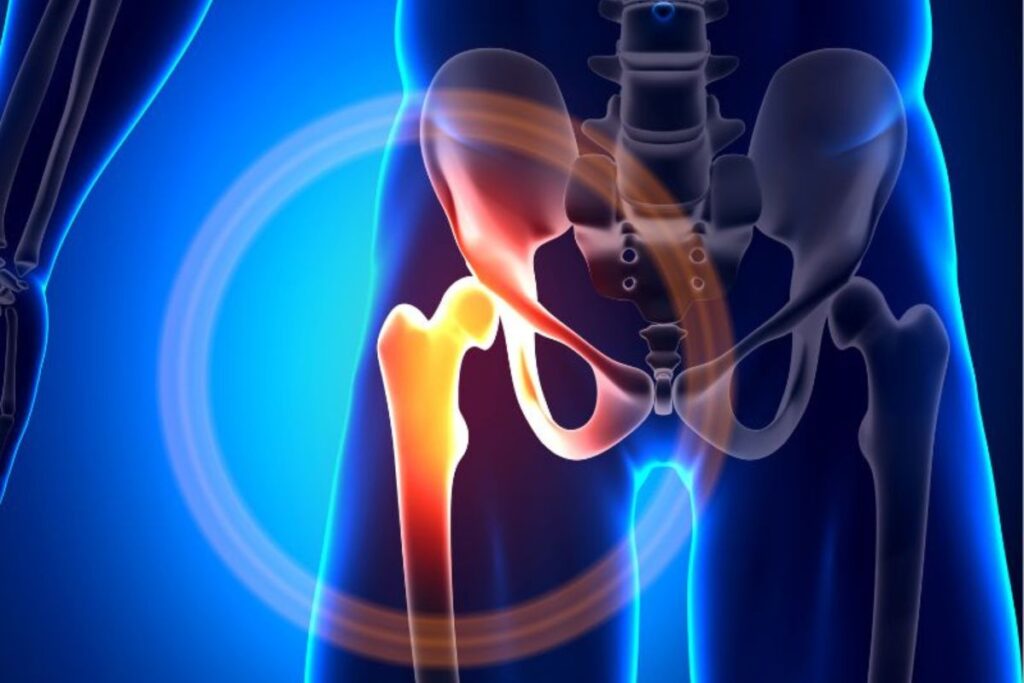
- Erector Spinae is often overlooked. These superficial meat packs run down your backbone and help you bend on one side. The strength of spinal erectors is critical to maintaining a healthy posture. Such paraspinal muscles worked on elliptical will be less than back extensions and bent-over rows, for instance. However, you can target erectors and obliques by including a side-to-side twist in your trunk movement.
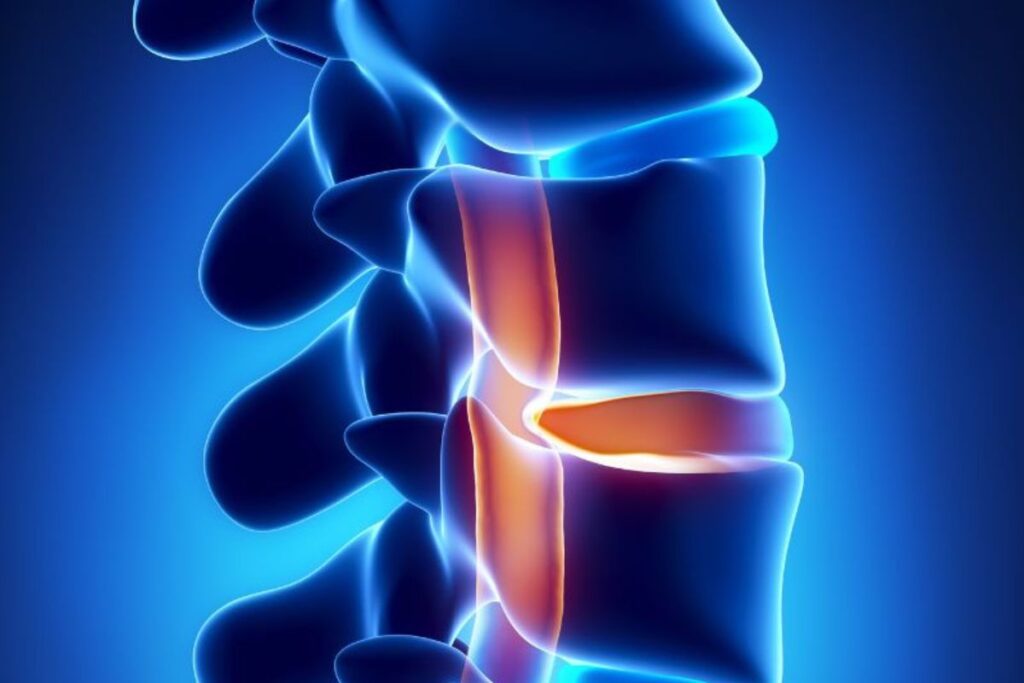
- Abs, those chiseled six packs whenever you see in the mirror; the obsession is real! Flanked by obliques – rectus, the show part, and transverse, deep layers, are twin abdominal muscles that make up your midsection. Their task is also the same, stabilizing the core and maintaining internal pressure. Remember, working and building muscles are two different concepts. That’s why no cardio will be seen in exercises for toned abs, shortlisted by ACE and San Diego University.
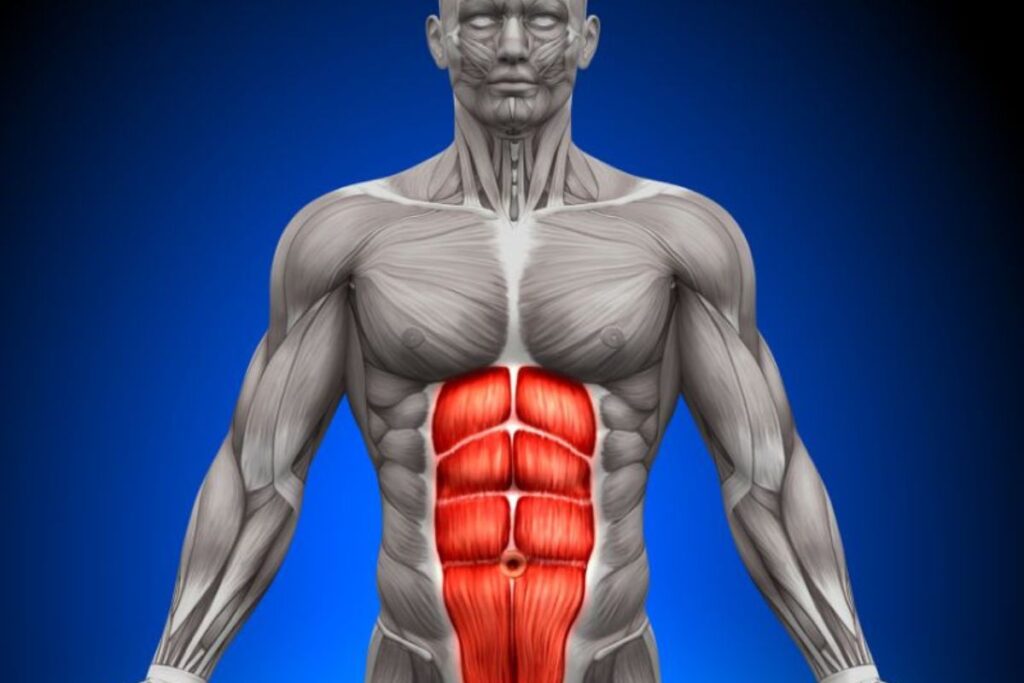
3. Upper Body
Upper-body muscles are hard at work when you’re using dual-action handlebars. Ellipticals encourage intra-limb coordination. Try to mimic your natural running gait, with hands and legs moving in synergy at the same pace.
- Pull muscles include your back and biceps. Biceps originate from shoulder blades and insert into elbows. The stronger they are, the easier the forearm pulls and the heavier the load capacity. There is more to what does the elliptical target during the retracting motion. It activates all the back muscles, including the gigantic lats and traps.
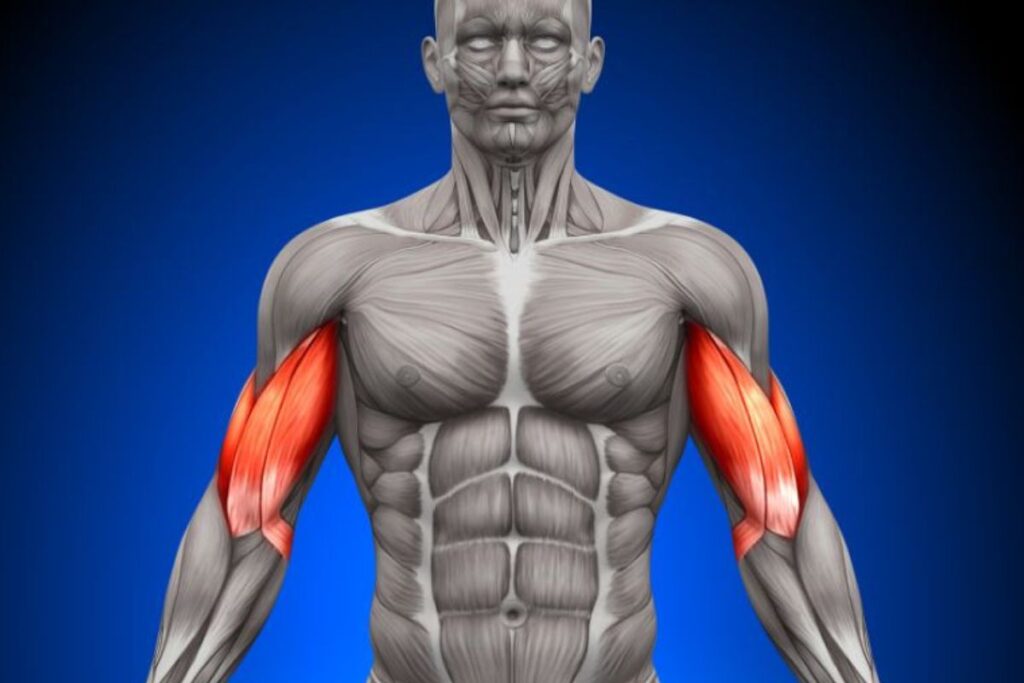
- Push muscles are mainly the chest and triceps. Contrary to the bicep, the three-headed fellow in your arm activates by extending the elbow further apart from the chest. Fan-shaped pec muscles that make the bulk of breasts are thoroughly engaged in protracting shoulders, as are the deltoids anterior and serratus anterior.
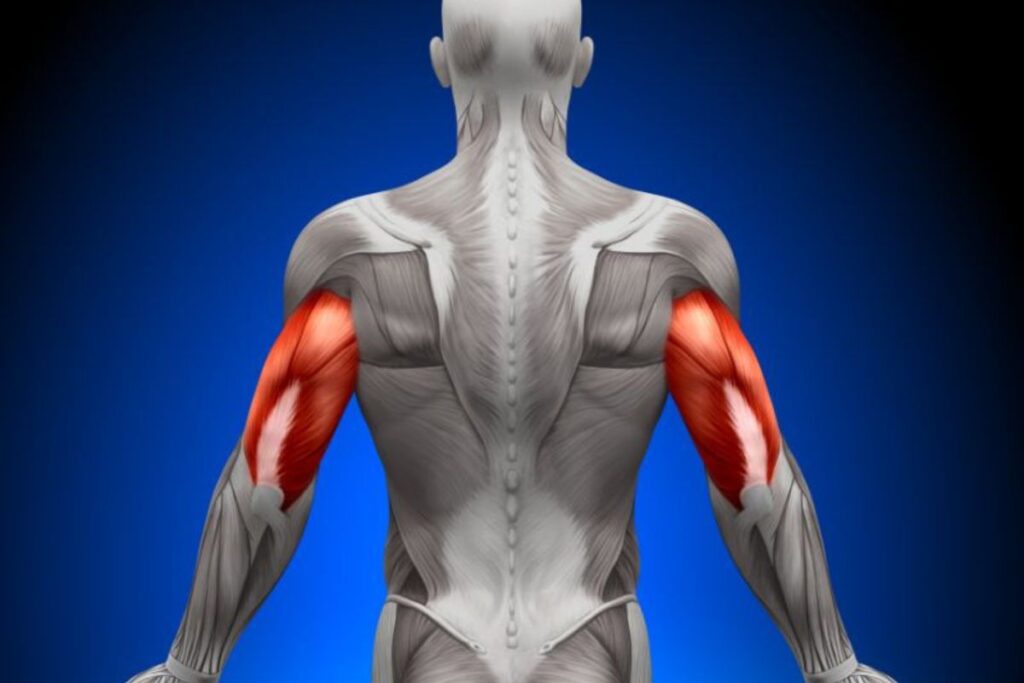
- Ellipticals’ arm poles are linked with pedals. Therefore, squeeze the full range of motion for your stride so that the handles may travel a greater distance as well. Like going uphill or reverse works for legs, changing hand grips concentrates on particular upper body segments. For example, overhand and wider: push muscles; underhand and a little closer: pull muscles! It’s the famous pronated vs supinated grip enigma in the fitness world. The takeaway is to look for multi-grip handlebars.
Workout Types You Can Do On The Elliptical
Pedaling at an unchanged pace can be monotonous and boring at times. Additionally, shaking up your elliptical routine is imperative to reach specific goals. As an all-time exerciser and instructor of this gym staple, I’ve crafted 15-minute purposive sessions.
- Do warm-up and cool-down for three minutes at a walking speed, low resistance, and preferably no incline.
- Cardio isn’t meant for training to failure. Listen to your body and progress steadily.
- Maintain a proper form. And don’t leave handles. Occasionally, it’s okay to reach out for a bottle or console.
- Keep an eye on performance metrics and adjust accordingly. Duration, heart rate, SPM, and METs are the most important ones.
- Repeat any of the following workouts twice with two rest days in order to fulfill the weekly physical activity guidelines.
- In case of any cardiovascular or joint disorder, consult a doctor before modifying the activity plan.
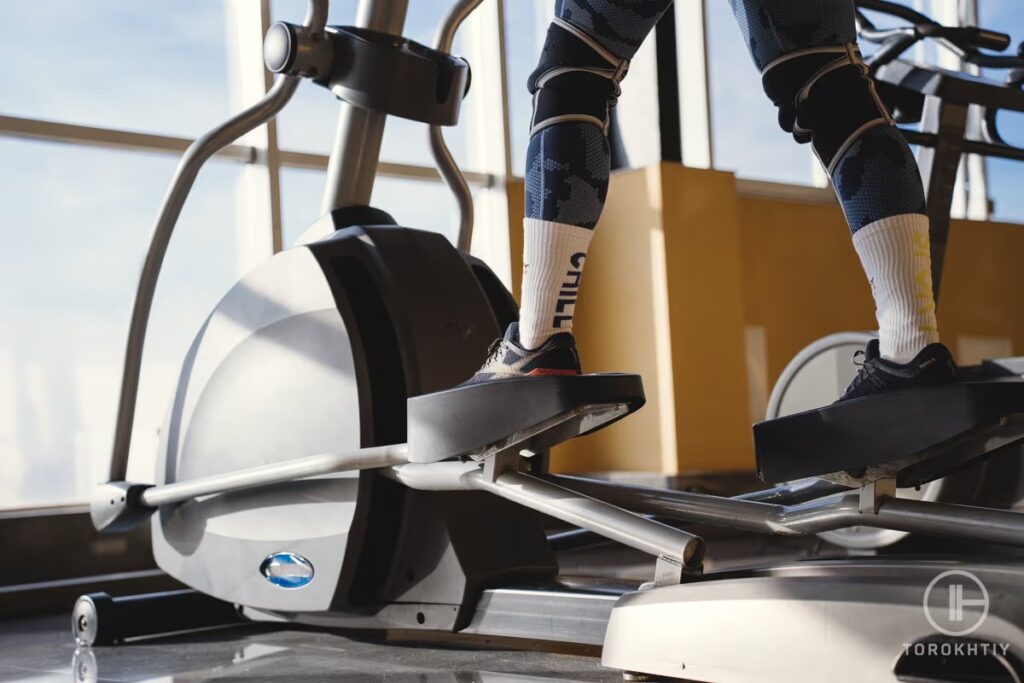
1. Get Started (Standard)
| Duration (minutes) | Resistance (0-18 levels) | Incline (0-20%) | Intensity (Low, Moderate, High) | Additional Details |
|---|---|---|---|---|
| 0:00-3:00 | 3 | 0 | Low | Arms and Legs |
| 3:00-8:00 | 5 | 2 | Moderate | Arms and Legs |
| 8:00-10:00 | 8 | 2 | High | Arms and Legs |
| 10:00-12:00 | 5 | 2 | Moderate | Arms and Legs |
| 12:00-15:00 | 3 | 0 | Low | Arms and Legs |
| 13:00-15:00 | 10 | 5 | High | Arms and Legs |
The vigorous mix of inclines and tensions will challenge your heart. Ensure you take a sixty-second rest of slow pedaling and no arms motion in between.
2. Legs, Oh my! (HIIT)
| Duration (minutes) | Resistance (0-18 levels) | Incline (0-20%) | Intensity (Low, Moderate, High) | Additional Details |
|---|---|---|---|---|
| 0:00-1:00 | 5 | 5 | Low | Arms and Legs |
| 1:00-5:00 | 10 | 8 | High | Arms and Legs |
| 5:00-9:00 | 12 | 10 | High | Pedal Backward |
| 9:00-10:00 | 5 | 10 | Low | Hands off |
| 9:30-13:00 | 10 | 12 | High | Arms and Legs |
| 13:00-15:00 | 10 | 5 | High | Arms and Legs |
The vigorous mix of inclines and tensions will challenge your heart. Ensure you take a sixty-second rest of slow pedaling and no arms motion in between.
3. Build and Burn (Endurance)
| Duration (minutes) | Resistance (0-18 levels) | Steps per minute | Intensity (Low, Moderate, High) | Additional Details |
|---|---|---|---|---|
| 0:00-2:30 | 5 | 100-120 | Low | Arms and Legs |
| 2:30-5:00 | 5 | 120-160 | Moderate | Hands off |
| 5:00-7:30 | 8 | 150-160 | High | Arms and Legs |
| 7:30-10:00 | 0 | 100-120 | Low | Arms and Legs |
| 10:00-12:30 | 5 | 120-160 | Moderate | Hands off |
| 12:30-15:00 | 5 | 100-120 | Low | Arms and Legs |
This regimen gets all elliptical target areas to stay aware and activated. You can set a constant incline at 0%, 5%, or 10% as deemed fit.
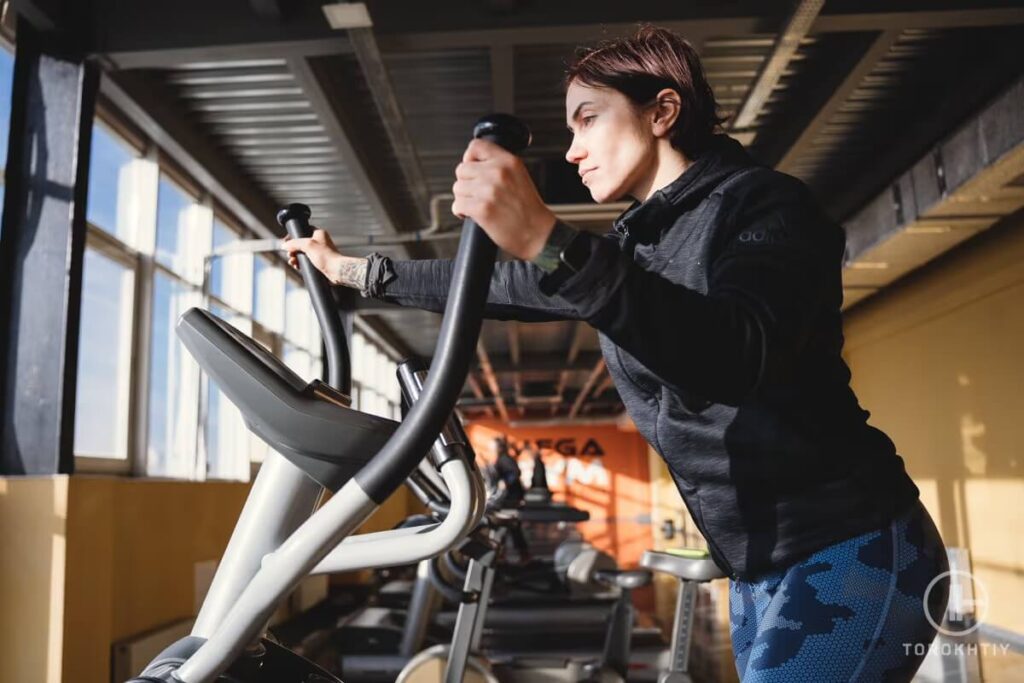
4. The Climb (Uphill)
| Duration (minutes) | Resistance (0-18 levels) | Incline (0-20%) | Intensity (Low, Moderate, High) | Additional Details |
|---|---|---|---|---|
| 0:00-3:00 | 15 | 5 | Low | Arms and Legs |
| 3:00-6:00 | 12 | 8 | Low | Arms and Legs |
| 6:00-9:00 | 10 | 12 | Moderate | Hands off |
| 9:00-12:00 | 8 | 16 | High | Arms and Legs |
| 12:00-15:00 | 5 | 20 | High | Arms and Legs |
Carefully dial-up the ramp gradient by small percentages and deduct resistance levels. Don’t pedal backward, as you’ll mimic uphill sprinting.
5. Slow ‘N’ Steady (Low-Impact 3x)
5. Slow ‘N’ Steady (Low-Impact 3x)
| Duration (minutes) | Resistance (0-18 levels) | Incline (0-20%) | Intensity (Low, Moderate, High) | Additional Details |
|---|---|---|---|---|
| 0:00-1:00 | 10 | 5 | Low | Arms and Legs |
| 1:00-2:00 | 7 | 2 | Moderate | Arms and Legs |
| 2:00-3:00 | 10 | 8 | Low | Arms and Legs |
| 3:00-3:30 | 10 | 2 | Moderate | Hands off |
| 3:30-4:00 | 10 | 2 | Moderate | Hands-only |
| 4:00-5:00 | 15 | 2 | Low | Arms and Legs |
Connect an HR monitor for low-impact workouts and stay within 50-70% of the max heart rate (bpm). Going backward will help with the knee pain if needed.
6. Muscular Blast (Total-Body)
| Duration (minutes) | Resistance (0-18 levels) | Incline (0-20%) | Intensity (Low, Moderate, High) | Additional Details |
|---|---|---|---|---|
| 0:00-5:00 | 5 | 10 | Low | Arms and Legs |
| Workout A: Bench Press, Barbell Back Squats, Pull-ups (8-10 reps each) Workout B: Incline Press, Bulgarian Split Squats, Supine Rows (6-12 reps each) | ||||
| 5:00-10:00 | 10 | 5 | Moderate | Arms and Legs |
| Workout A: Dumbbell Hamstring Curls, Overhead Press (10-15 reps) Workout B: Deadlifts, Side Lateral Raises (6-8 reps each) | ||||
| 10:00-15:00 | 18 | 10 | High | Arms and Legs |
Do Workouts A and B on alternate days, and determine the number of sets yourself. If you don’t have the equipment, rely on bodyweight exercises like air squats, pull-ups, sit-ups, crunches, and hollow rocks.
Elliptical We Recommend
ProForm Carbon EL is a top-notch elliptical with 18 magnetic resistance levels, a 19″ adjustable stride, and up to 20⁰ incline. The console features quick-access buttons for these settings. Your iFit trainer can also adjust virtually.
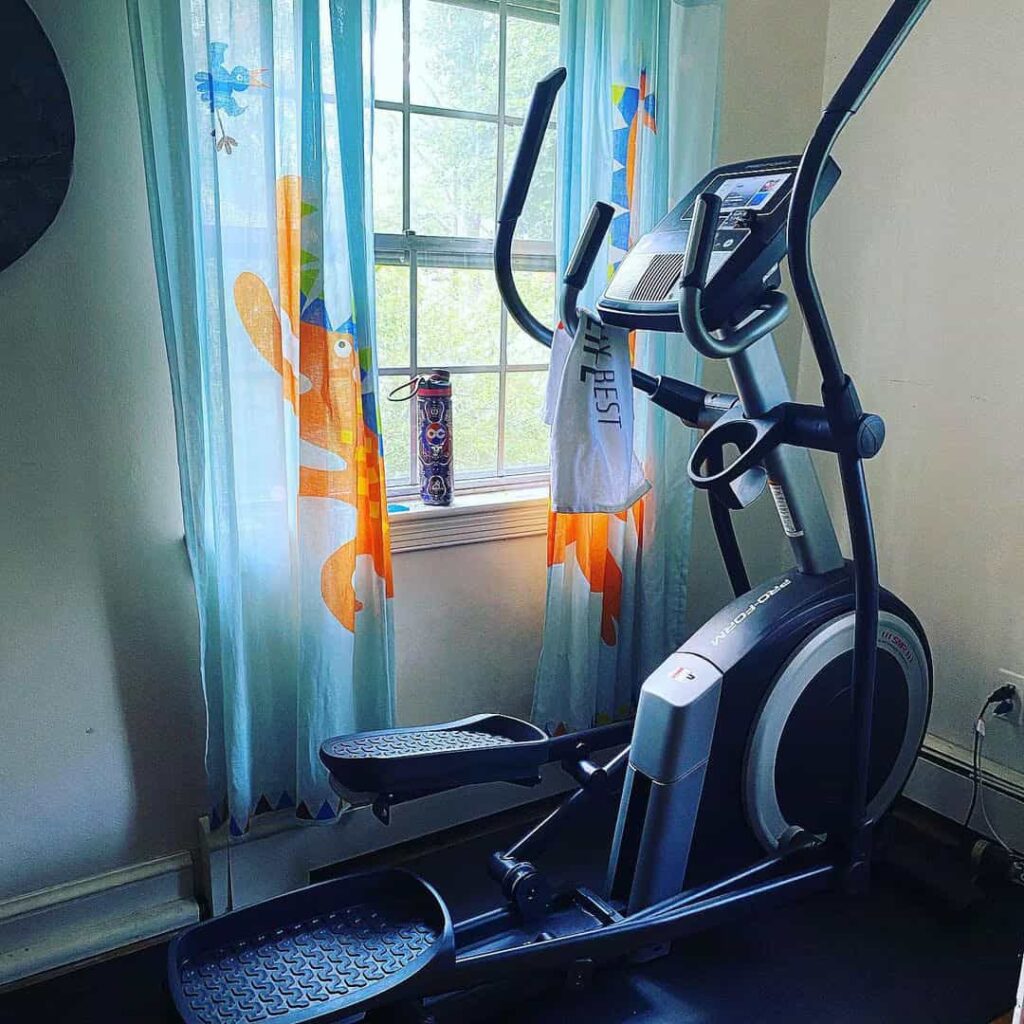
Among convenience add-ons are a 5” HD display, media shelf, bottle holder, Bluetooth speakers, and front-mounted transport wheels. The 275 lb sturdy machine comes with a 10-year frame, 1-year parts and labor warranty.
FAQ
Does An Elliptical Tone Your Muscles?
Since an elliptical activates the entire body from legs to shoulders, you can use it to tone and tighten your muscles.
Will The Elliptical Slim My Legs?
A moderate-intensity elliptical training can burn excess fat from your thigh, thus slimming the legs.
Is 30 Minutes Of Elliptical Enough?
As discussed earlier, 30 minutes of cardio five days a week complete 150 minutes of the minimum weekly requirement. In addition, an elliptical kills off 270-378 calories on average in this much time, which must be enough for your body recomposition goals.
Conclusion
So, what muscles does the elliptical work? Obviously, it’s a challenge for your legs, including quads, hammies, calves, and glutes. The core and lower back muscles are engaged secondarily. If you use dual-action handlebars, your upper body, from the scapula to the spinal erectors, gets activated.
In short, elliptical machines are great for low-impact, total-body workouts at a broad spectrum of intensity and muscle involvement.
What’s your fav cardio buster? If it’s not elliptical, share your reasons in the comment section.
Also read:
- Can Elliptical Build Muscle
- Benefits of Elliptical
- Elliptical vs Stair Climber
- Does Elliptical Burn Belly Fat
- Walking Vs Elliptical
References:
- Comparison of elliptical training // NCBI: https://www.ncbi.nlm.nih.gov/pmc/articles/PMC3299003/
- Calories burned in 30 minutes for people of three different weights // Harvard Medical School: https://www.health.harvard.edu/diet-and-weight-loss/calories-burned-in-30-minutes-for-people-of-three-different-weights
- Muscular Activation Patterns During Exercise on the Treadmill, Stepper, and Elliptical Trainer // NCBI: https://pubmed.ncbi.nlm.nih.gov/32881840/
- Movement direction impacts knee joint kinematics during elliptical exercise at varying incline angles // ScienceDirect: https://www.sciencedirect.com/science/article/abs/pii/S0968016021000521
- Comparison of erector spinae fatigability between female patients with Parkinson’s disease and healthy individuals // BMC: https://bmcneurol.biomedcentral.com/articles/10.1186/s12883-022-02719-w
- American Council on Exercise (ACE)-sponsored Study Reveals Best and Worst Abdominal Exercises // ACE: https://www.acefitness.org/about-ace/press-room/press-releases/246
- How much physical activity do adults need? // CDC: https://www.cdc.gov/physicalactivity/basics/adults/index.html
- Photos made by Torokhtiy Media Team; decade3d, Canva; janulla, Canva.
Why Trust Us?
With over 20 years in Olympic weightlifting, strength training, nutrition coaching, and general fitness our team does its best to provide the audience with ultimate support and meet the needs and requirements of advanced athletes and professional lifters, as well as people who strive to open new opportunities and develop their physical capabilities with us.
By trusting the recommendations of our certified experts in coaching, nutrition, and sports training programming, as well as scientific consultants, and physiotherapists, we provide you with thorough, well-considered, and scientifically proven content. All the information given in the articles concerning workout programming, separate exercises, and athletic performance, in general, is based on verified data.
The product testing process is described in more detail here.
Author: Ihor Shymechko
Pro Olympic Weightlifter, Coach
Best Results: Snatch – 208 kg,
C&J – 240 kg
Ihor has been a professional weightlifter since 1996, boasting over two decades of competition experience. His notable achievements include clinching the European Championship in 2009 and securing a silver medal in the 105kg division at the Senior World Championships in 2011. Ihor represented his country in the 2008, 2012, and 2016 Summer Olympics. After retiring from competitive weightlifting, he transitioned to coaching, leveraging his vast experience to guide athletes who now compete on both national and international stages.



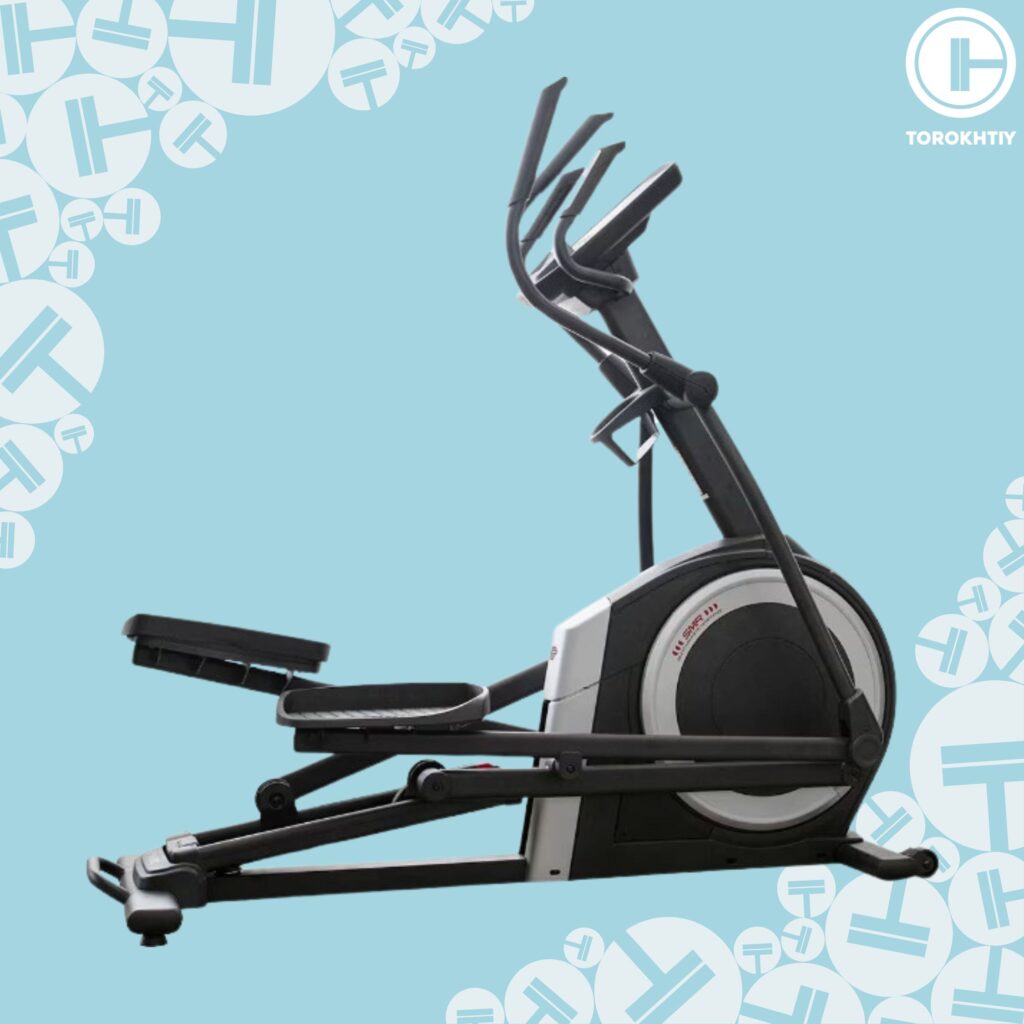
Still have questions after reading our article? Unlock your full potential by engaging with our experts and community! Don’t hesitate — leave a comment below and Ihor Shymechko will provide a personalized answer and insights to help you reach your goals.